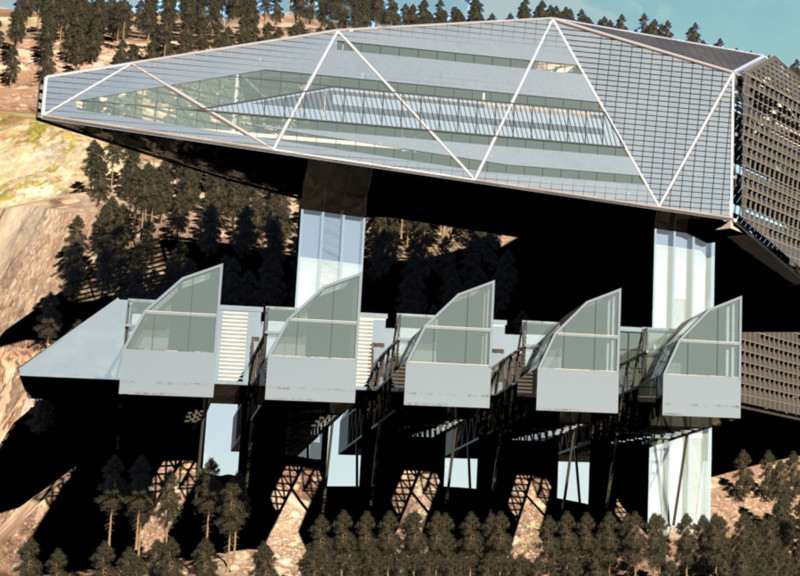5 key facts about this project
From the outset, the project conveys its purpose through a careful arrangement of spaces that prioritize both usability and aesthetic appeal. The layout is designed to enhance communication among users, with communal areas that encourage social interaction while providing zones for privacy and reflection. The thoughtful circulation paths demonstrate an understanding of how people navigate spaces, allowing for a seamless flow between different areas.
A defining feature of the project is its facade, which balances modernity with local influences. The exterior utilizes a mix of materials such as reinforced concrete, glass, and wood, each selected not just for their structural properties but also for their tactile and visual qualities. The use of large windows invites natural light, creating bright interiors while also establishing a dialogue with the surroundings. The integration of natural stone elements adds another layer, connecting the architecture to the site’s geological context and creating a sense of grounding.
The unique design approach manifests in its sustainable features, which are woven into the architecture rather than appended as an afterthought. The building is equipped with a green roof system that provides insulation and supports local biodiversity, while rainwater harvesting systems contribute to water efficiency. Internally, the project incorporates open layouts paired with flexible spaces that can be adapted to various functions over time, promoting longevity and adaptability in its use.
In addition to its environmental considerations, the project embraces technological advancements, featuring smart systems that enhance the user experience. These elements work to improve energy efficiency and promote a user-friendly environment, allowing for a contemporary lifestyle that aligns with modern expectations.
The architectural design also thoughtfully reflects the cultural heritage of the area. Local craftsmanship influences design details, which can be seen in decorative elements and material choices that echo the vernacular architecture of [location]. This integration of local identity enriches the project's narrative, fostering a sense of belonging among users and visitors.
Ultimately, this project epitomizes a holistic approach to architecture that balances functionality with aesthetic considerations and ecological responsibility. Its commitment to community, sustainability, and cultural resonance exemplifies how architecture can serve broader social objectives while providing space for personal and collective experiences. As you delve deeper into the project, exploring the architectural plans, architectural sections, and architectural ideas, you will gain further insights into the thoughtful design decisions that have shaped this project into a meaningful contribution to the built environment.


 Lara Nader Mazloum
Lara Nader Mazloum 




















